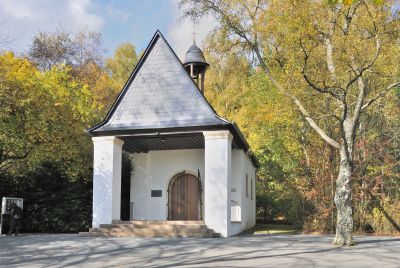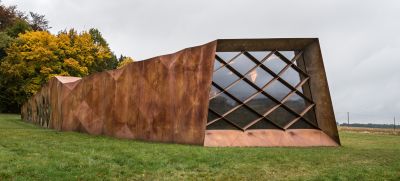Polish victims in the Hinzert SS concentration camp

Processing and remembering the past
During the post-war years, several guards who worked at the camp in Hinzert were sentenced in court. Among them was the former camp doctor, Waldemar Wolter, who was hanged after being found guilty by a US military court in Landsberg am Lech for his crimes committed in Mauthausen concentration camp. The camp commander, Eugen Wipf, a Swiss citizen, died shortly after being sentenced to life imprisonment by the confederate High Court in Zurich in 1947. Hermann Pister, who founded and then ran Hinzert as an SS special camp before becoming commander of Buchenwald concentration camp (while retaining responsibility for Hinzert there) was sentenced to death by a US military court in 1947 during the Buchenwald trials, although he died before the sentence could be carried out. In 1948, in two cases brought before the supreme court for the French zone of occupation – the Tribunal Générale Gouvernement Militaire de la Zone Française d’occupation en Allemagne et en Autriche – which was set up in Schloss Rastatt palace, charges were brought against 22 people. Some of the accused were found not guilty; others received other sentences, including life imprisonment for defendants Windisch and Heinrich. Defendants Pammer, Reiss, Schattner and Fritz were sentenced to death. These sentences were ultimately commuted to lifelong imprisonment, while the duration of the terms of imprisonment for the others was shortened. In 1950, Georg Schaff and Josef Brendel were sentenced before German courts to terms of imprisonment which were short in relation to the severity of their crimes (Mannheim district court). In 1955, the second commander at Hinzert, Egon Zill, who later became the commander of the Natzweiler Struthof concentration camp and Flossenbürg concentration camp, was sentenced to life imprisonment before the high court in Munich. However, he was released in 1961. This was the year in which Josef Brendel again appeared in court, this time in Trier, for the murder of the 70 Soviet prisoners of war in Hinzert in October 1941, a crime for which he had thus far not faced trial. He was cleared of the charge of being an accessory to murder.[11]
It was not until the 1980s that interest in the history of the concentration camp began to grow in Hinzert. This was supported by the activities of political and church youth organisations and by the Catholic Academy in Trier. From the 1950s onwards, the former site of the prison camp, which had been returned to its original owners, was again used as a farm. In October 1945, former prisoners erected the “Hinzert cross” in the former prisoners’ cemetery. In the early 1980s, the largest material trace of the camp was the “honorary cemetery” laid out on the site of the former guards’ camp in 1946 by the French military authority. Here, 217 dead were reburied whose remains had been found in shallow graves in the surrounding area. There, a “chapel of conciliation” was built in 1948 on the initiative of a German vicar. The lack of interest in examining the past in Hinzert was reflected in the treatment of this period in history per se and in the way in which it was perceived by the general public. For example, for a long time, it remained a point of contention as to whether Hinzert ranked as a separate concentration camp within the National Socialist camp system. On 2 March 1967, Hinzert was officially categorised as being a concentration camp in the list of concentration camps and their subcamps published in the German Federal Law Gazette (Bundesgesetzblatt).[12] Even so, for a long time, the functions fulfilled by Hinzert, for some of which the camp played a central role, were ignored by the authorities, which focused “only” on the history of the site as a “work education camp”.[13]
[11] Bader, Uwe; Welter, Beate: Das SS-Sonderlager/KZ Hinzert, in: Benz, Wolfgang; Distel, Barbara (eds.): Der Ort des Terrors. Geschichte der nationalsozialistischen Konzentrationslager . Vol. 5: Hinzert, Auschwitz, Neuengamme, München 2007, p. 17–74, here p. 37.
[12] Sixth provision regarding the implementation of the Federal German Restitution Law of 23 February 1967 (BGBl. I p. 233), most recently modified by § 1 of the provision of 24 November 1982 (BGBl. I p. 1571), https://www.gesetze-im-internet.de/begdv_6/BJNR002330967.html (13/12022).
[13] Bader, Uwe; Welter, Beate: Das SS-Sonderlager/KZ Hinzert, in: Benz, Wolfgang; Distel, Barbara (eds.): Der Ort des Terrors. Geschichte der nationalsozialistischen Konzentrationslager . Vol. 5: Hinzert, Auschwitz, Neuengamme, München 2007, p. 17–74, here p. 17, 38. See Klopp, Eberhard: Hinzert – kein richtiges KZ? Ein Beispiel unter 2000, Trier 1983.









